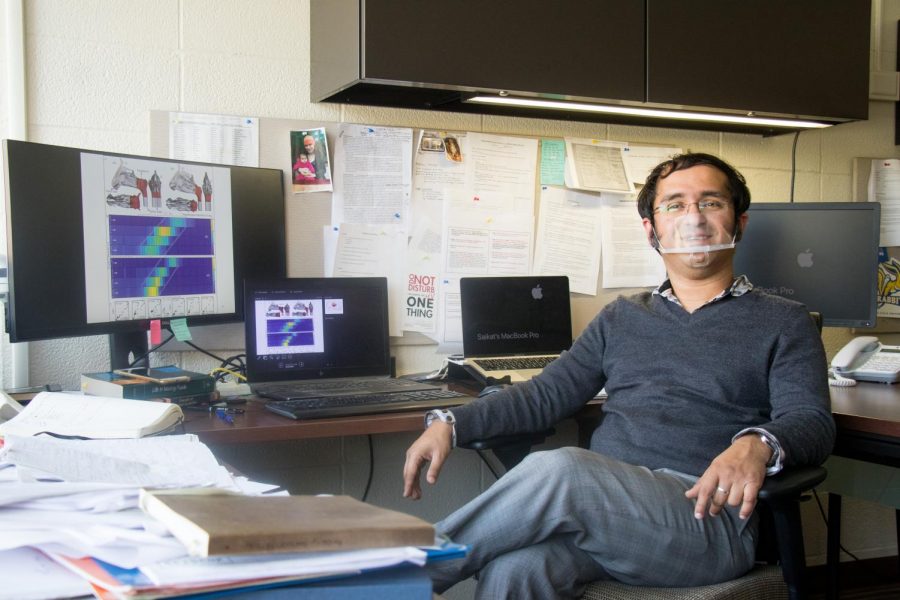Basu Research Group reinvents mask technology
September 23, 2020
The Basu Research Group, housed in Crothers Engineering Hall, has teamed up with researchers across the nation to develop a reusable mask that traps and kills the coronavirus.
“The mask is being designed to have a novel bio-inspired filter that can screen droplets bearing the COVID-19 virus better, and yet be more breathable than currently available masks,” said Dr. Saikat Basu, assistant professor of mechanical engineering.
Though the technology itself is an important aid in the current COVID-19 pandemic, what is especially interesting is its inspiration. Basu explained that the model for this newly reinvented mask technology is the nasal cavities of certain animals.
“The first thing that we realized was there were animals out there that are better at smelling than us. They have a much more complicated nasal airway that can trap droplets as they breathe in air,” Basu said. “All the different air transmission passages are inspired from a pig’s nose, but there is also some additional engineering.”
The respirator used in this mask mimics the unique geometry of a pig’s nasal cavity. The design contributes to the trapping of the novel coronavirus, while the material also acts to kill the virus on contact. After studying the effects of the virus on different surfaces, Basu found copper to be the most effective in inactivating the virus.
“We have done research on the virus sitting on different surfaces, like plastic or copper, and on copper the virus is deactivated much quicker than other surfaces,” said Basu. “With the presumption that more droplets would be trapped in the corners, if we can wrap those corners with copper rings, hopefully that will create a targeted killing of the virus.”
Along with the Basu Research Group, there are other partners involved in this project. Funded by the National Science Foundation, they are also working with Dr. Sunny Jung with Cornell University and Dr. Leonardo Chamorro with the University of Illinois at Urbana-Champaign (UIUC).
“What I am doing is simulations on the computer, but the design is being prepared by Cornell and they are going to run some initial experiments,” said Basu. “Then UIUC, they are going to run experiments where they can track the droplets and figure out if they can be trapped in this type of transmission.”
The collaborators are currently in the experimenting phase, making sure they have the best possible design. Beginning as a virtual computer design and transitioning to a 3D-printed design, they can then test if it is effective in killing actual COVID-19 samples.
The group is hoping to have a product ready as soon as the beginning of 2021.



















